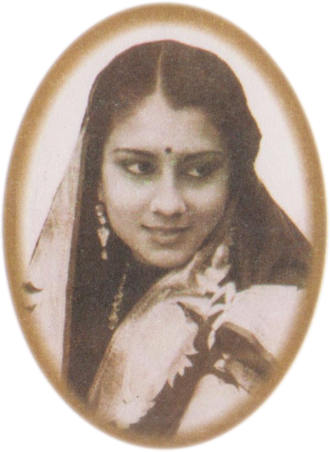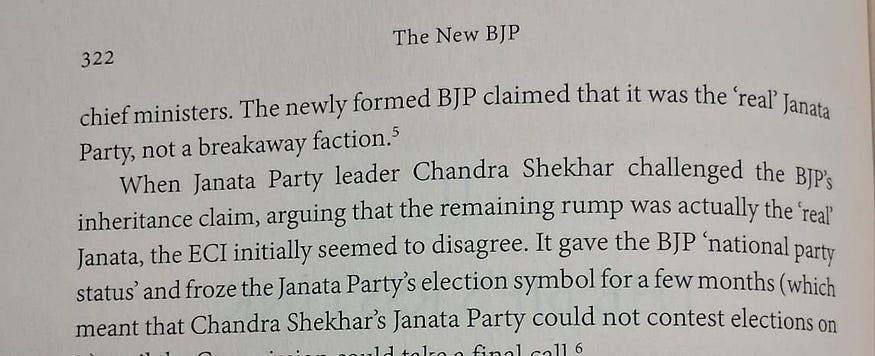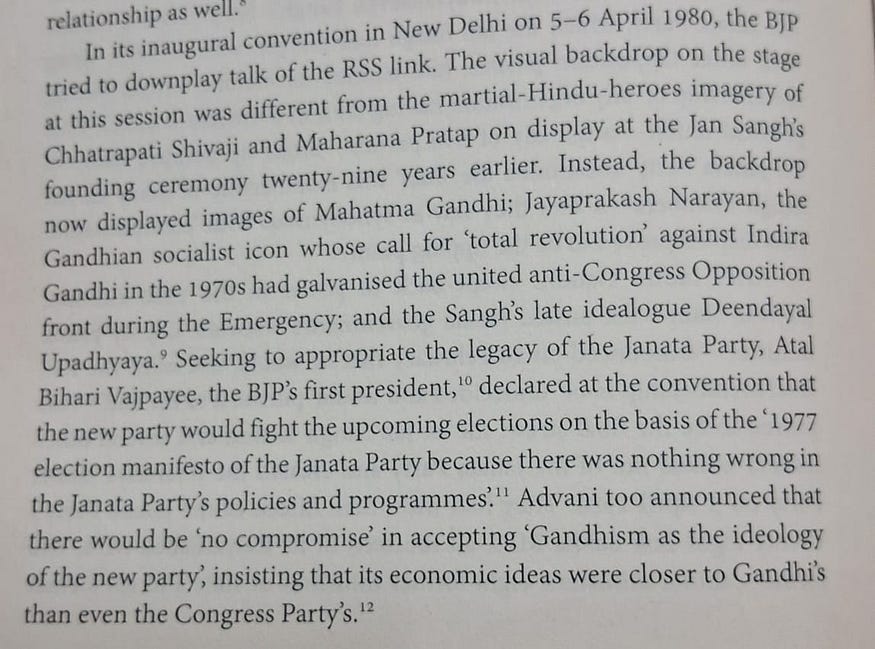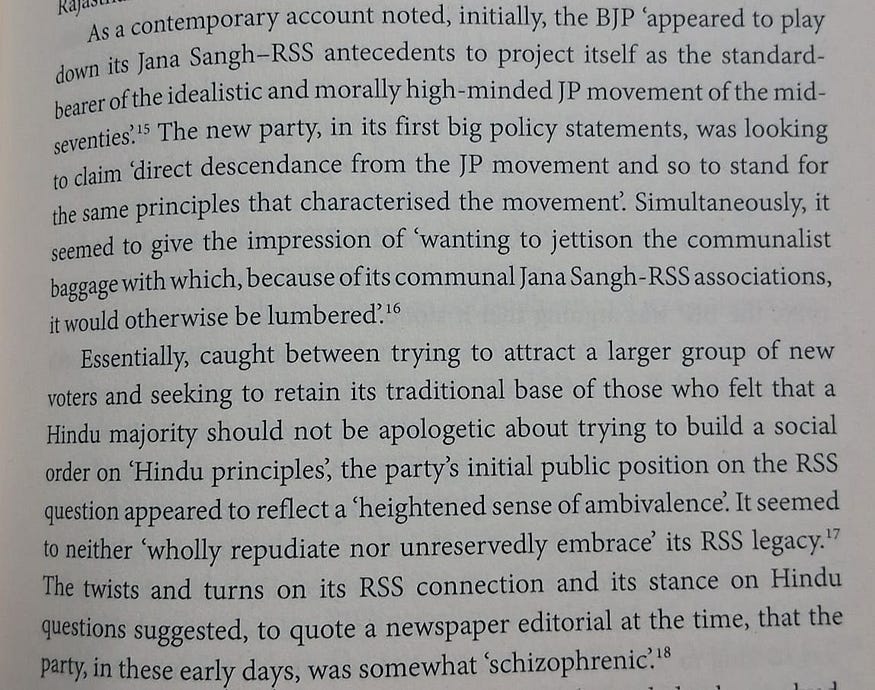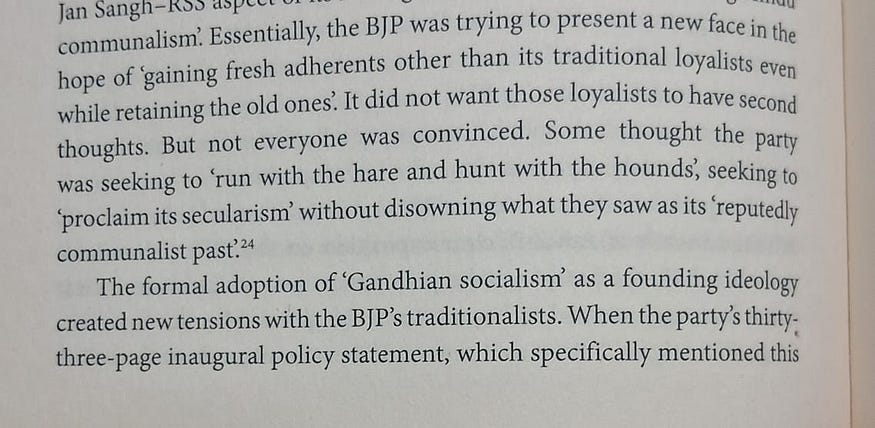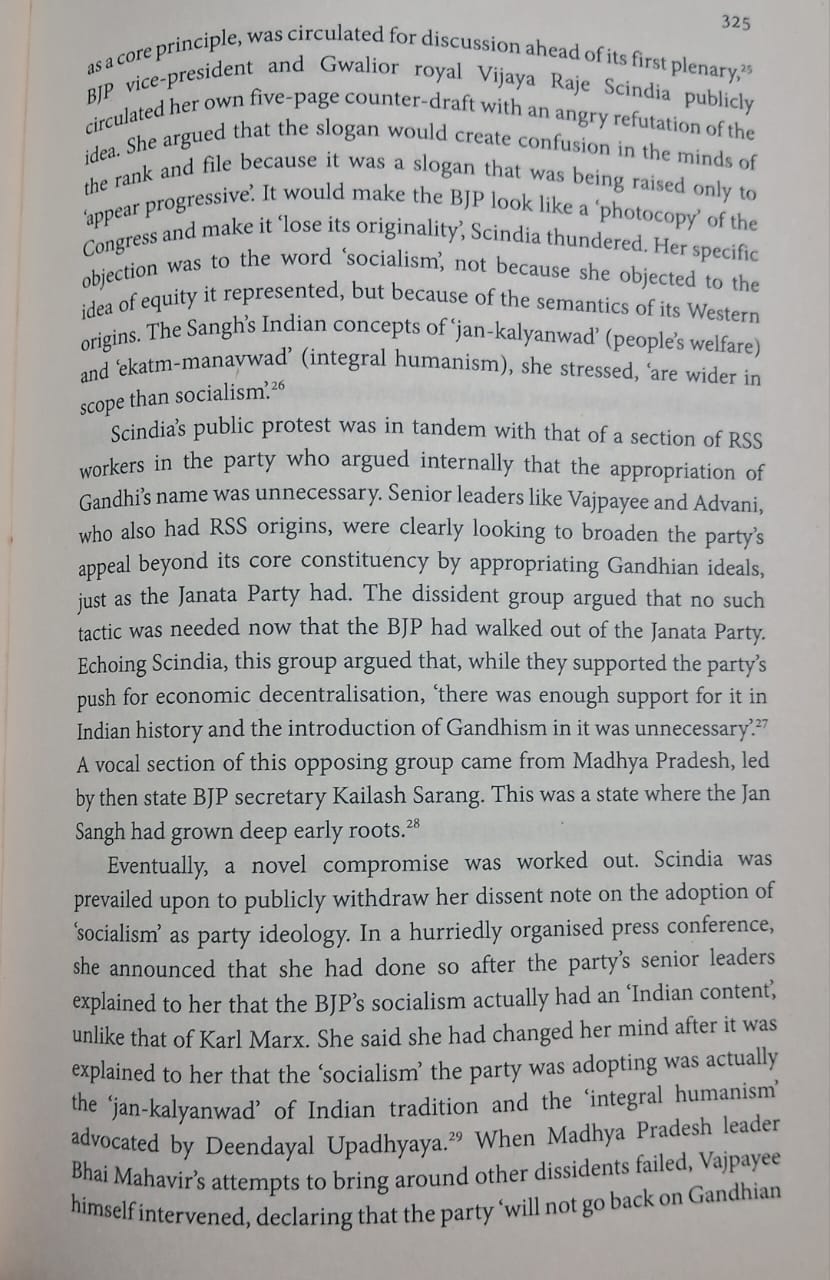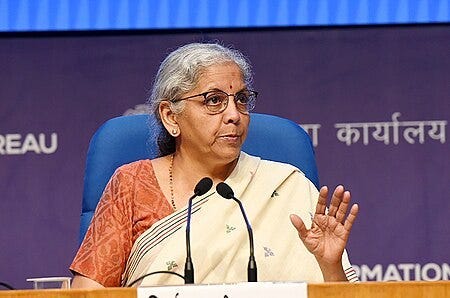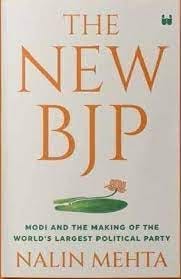The Silent Majority (Part 1)
I have always maintained that conservatism, more than an ideology is an instinct. Therefore, conservatism is basically an instinct which seeks to preserve the best of our past and to dislodge what was seen as rotten from it. This may be seen as different things in different nations, as conservatism is a localized instinct of people who love their values, ideals, culture and past. An example of this may be seen in Great Britain: where after the bloodshed of the Glorious revolution, the king was brought back as they felt that the position of the king and the ideals he espoused, which where the ideals of Great Britain were good and something to be proud of. They decreased his powers and gave him less legislative authority to some extent at that point of time as they felt that the monarchy was unaccountable to some extent due to the inherent nature of monarchies as they get legitimacy from God and not their citizens. Great Britain is a democracy in every important way but still has a royal family which serves the nation-state by being a symbol of their people’s ideals. So, conservatives latch onto an ideology or ideal to protect the things of the past they value. In Britain, it was the Monarchy, United States- Liberty and Constitution and in India- Nationalism, Hindutva and Traditionalism.
Conservatism is an instinct. Therefore, all people have that instinct inside them which they either listen to or suppress. The conservative politician has always counted upon the Silent Majority during elections, they feel that the majority of people who vote for them may not be loud about it, but will come out in big numbers on the day of voting to support the people closest to them in values and who they feel will secure their interests. According to the Cambridge dictionary, the definition of Silent Majority is “a large number of people who have not expressed an opinion about something”. The term “silent majority” refers to a large block of voters that feel marginalized, silenced or underserved by the political system. It’s commonly assumed that, if they voted en-masse, this “silent majority” would have an enormous ability to affect the outcome of any given election. It was first used politically by Warren Harding in his presidential campaign in 1919, but the term gained real traction in the 1960s, when it was used by Richard Nixon as a way of galvanizing voters that may otherwise have not voted due to their dissatisfaction with the Vietnam War and politics in general. For Nixon, they were the white working class American people who made him the President of the U.S.A.
In India, the BJP is seen as the party of the conservatives, if they are or not is a meaningless discussion. And it would be ignorant to say that the BJP does not have conservative policies, whether social or fiscal. The BJP also has a Silent Majority behind it, which helps it to win in elections. The question is who are the members of the Silent Majority in India ? Indian politics is loud, every group has their voice whether they are farmers, businessmen, bureaucrats, the military or the various caste groups. All of these groups have one thing in common, they are dominated by men. The Silent majority of BJP are two groups- the aspiring urban middle class and women. The reasons why the middle class votes for BJP has been discussed and debated extensively, two of the most obvious reasons for their support being the excellent control of inflation and cultural and civilizational pride, but it is of little interest to me. The first article is on why the issues of Indian conservatism and women have never been antagonistic to one another unlike the west and the second part will be more data driven and even though women’s vote for the BJP has been discussed, I feel I can still add to the discourse.
In this article I shall focus on the influence women leaders have had on the Indian right wing movements and also on the influence of the lesser known RSS or the Rashtriya Swayamsevika Samiti. Before establishing the organization, Kelkar visited Dr. K.B. Hedgewar, the founder of the RSS, in 1936 and had a long discussion to persuade him regarding the need for starting a women’s wing in the Rashtriya Swayamsevak Sangh itself. However, Hedgewar advised Laxmibai Kelkar to establish an entirely separate organization that would be autonomous and independent of the RSS, as both groups were ideologically identical. Hedgewar promised Kelkar unconditional solidarity, support and guidance for the Samithi. Following this, Kelkar established the Rashtra Sevika Samiti at Wardha on 25 October 1936.
Many may believe that the RSS being a conservative organization stresses on women being mothers, which they frankly do, but to accuse them of doing only that shows their demeaning views towards homemakers. The RSS believes that women can guide society in these three ways, Matrutva (Universal Motherhood), represented by Jijabai; Kartrutva (Efficiency and Social Activism), represented by Ahilyabai Holkar; and Netrutva (Leadership) represented by Rani of Jhansi. So, the RSS does recognize that women can work for Dharma, land and civilization apart from being mothers while not demeaning motherhood unlike some people of the left. They believe that women can be able administrators and leaders.
Compared to the RSS, the Rashtra Sevika Samiti is a much smaller group. The Sangh has around 3,000 pracharaks across states, the Samiti has a mere 52 pracharikas and 150 vistarikas. According to the Samiti’s website, though, it has more than 55,000 sevikas across its over 2,700 shakhas. They also contribute significantly to public discourse and participate in social gatherings and work. These topics are not in the purview of my article.
Now coming to individuals of the right who have not only added to our public discourse but also were thought leaders and fiery speakers who galvanized the masses for our cause. I will be discussing about individuals who I feel have not got their due in our discourse even though they have contributed or aided to it.
Let us start with the founder of the RSS, Lakshmibai Kelkar. She was born in the Nagpur district of Maharashtra on Ashadh , Shukla Paksha, Dashmi, 1962, Vikram Samvat as per the Hindu Panchang which corresponds to the July month of 1905 in the Gregorian calendar. She used to listen to articles written in Kesari by Lokmanya Tilak which were read by her mother to a group of women in the neighbourghood. From her parents, she learned the qualities of leadership, fearlessness, nationalism and organizational skills. She also participated in a cow protection campaign with her nanny in her childhood. Unfortunately, She became a widow at the age of 27 when her husband died of tuberculosis. She then engrossed herself in Lok Kalyan. She realized that there were no schools for girls in Wardha and decided to open one. The school was named Kesarimal Kanya Vidyalaya. This breakthrough work by her paved the way for women’s literacy in Wardha. The school is functional to this day. She also convinced Dr Hedgewar by putting forward arguments and giving examples of personalities such as Swami Vivekananda who was convinced by this and impressed by her quiet strength and calmness. He told her that she can form a allied organization to the RSS which was a male only organization. She formed the Rashtriya Swayamsevika Samiti or the RSS to inculcate Nationalist sentiment in women and also to oppose and if required combat western ideologies. Her critique of feminism always stemmed from the belief that feminism is applicable to western realities, but to apply it in India without indigenizing it and to ignore Indian realities will be destructive for the Indian society. She was a woman with a unique balance of family and social values. There were many times when the need for her presence at home was unavoidable especially during times of her children’s ill health yet she continued her social work as well. She also helped in setting up MSME’s but that had to be stopped due to partition and this resulted in her seeing communal hate first hand in Karachi where she galvanized Hindu women by telling them to stay calm in face of adversity and made sure to get Hindus residing there safe boarding and lodging in Bombay. She also gave discourses on the Ramayana and told the Sevikas about the able administration of Ram and how women should emulate the character and qualities of Devi Sita. She began the publication of a journal ‘Sevika’ in Marathi which is now published in many languages as ‘Rashtra Sevika’. She celebrated centenaries of great women leaders and began the tradition of honouring the Motherland by rendering Vande Mataram at every meeting. She constructed the Devi Ahalya Mandir at Nagpur, the Asthabujha devi temple at Wardha where the Devi would have eight arms each holding lotus, Bhagavad Geeta, Saffron flag, Agni Kund, bell, sword and beads respectively representing woman power and installed the idols in various Kendras. She therefore was one of the first women of the Right who saw that women will be an asset for the civilization in the future. She pushed forward our ideas and provided intellectual, social and organizational support to the ideas that already existed in the society from an Indic perspective, but the RSS just like the male RSS is not a political organization, only a social one, so her and her organization’s mark on the political world was to be indirect, yet her contribution remains unmatchable to this day.
The India we live in right now, is not what India was in the 20th century. Women representation in politics was even lower than today and if there was any it was either from the congress or the marxists. Except, there was one lady who was the important member of not one but two parties of the right, the two parties being the Swatantra Party and the Bhartiya Jan Sangh and the founding member and one of the first vice presidents of the Bhartiya Janta Party. I am referring to Rajmate Vijaya Raje Scindia.
She was from a Royal Nepali family which was exiled to India and got married into the Royal Scindia family. Her husband was the Maharaja of Gwalior, Jivajirao Scindia. One of her most notable achievements as the Maharani was the founding of the Scindia Kanya Vidyalaya (SKV) in 1956. It focused on all-rounded Indian education of girls, stressing on Indian values, religion, and culture. She said and I quote, “The progress of science along with industrialization it brought, changed the old pattern of family life. Because of economic conditions, Indian women had to come out, (and) also add to the family income. I believe in the old adage, ‘the hand that rocks the cradle rules the world’. I wanted a school to strengthen those hands. My dream was to start a school which would serve both these ends”. She had some magical foresight and knew what was required to do so. She did not want to join politics but was forced to do so by the congress who were not happy with the actions of her husband. The action being patronising the Hindu Mahasabha. Gwalior was also a HM stronghold. Her husband, Maharaja Jivajirao Scindia refused to contest in politics and so she had to enter the political battleground and that resulted in her winning from Gwalior. She had clashes with the then CM of Madhya Pradesh, D.P Mishra which resulted in her leaving the congress party and then she won Gwalior again from a Swatantra party ticket, the party was formed by conservative thought leader Rajaji, who also was an individual who believed in the free market. She later joined the BJS(Bhartiya Jan Sangh) formed by Shyama Prasad Mookherjee. While being a member, she entered the Madhya Pradesh assembly elections and broke the congress government there and formed a non congress government under the Samyukta Vidhayak Dal (SVD). Her clash with the Indira Gandhi government came during the Emergency when she was interned in the Tihar Jail. Her fellow prisoner was another popular royalty hailed as a Rajmata: former Maharani of Jaipur, Gayatri Devi. Both the Rajmatas were not restrained in their disapproval of Gandhi’s autocratic methods. It is important to note that Gayatri devi was a member of the Swatantra Party, another right wing party of the time. She was a founding member of the now dominant ruling national party, Bhartiya Janta Party. In the inaugural convention of the BJP, the BJP tried to downplay its Hindutva and tried to showcase itself as a Gandhian socialist party. This did not go down well with the RSS, its traditional Hindu leaders and with its traditional voter base who felt that Hindus shouldn’t be apologetic about their Hinduness which the BJP from its start seemed to be doing. Many observers felt they were trying to show themselves as the inheritors of the JP movement and the true Janata party, as the BJS had broken away from the JP due to them not wanting their members to have dual membership of both the Janata party and the RSS. The BJP under Vajpayee then formally adopted Gandhian Socialism which angered the BJP traditionalists and then the lioness roared. The thirty three paged inaugural policy statement was criticized and countered by her in a five page counter using the strongest of terms. She forced the BJP high command(I mean the others apart from her) to make integral humanism as their flagship economic ideology. She accused the BJP of trying to be a photocopy of other parties and to look progressive which was not the goal of the party. She also believed that socialism was a sister ideology of marxism and therefore foreign and of no use. I will provide my sources for this below:
Her tale for pushing the BJP towards Hindutva does not end here. She was the person who pushed for the RJB movement to be a manifesto promise of the BJP in an executive council meeting in 1988. She also has been said to have inspired Kameshwar Chaupal, a karsevak who also laid the first brick for the Shri Ram Mandir. On February 3, 1986, a Sant Sammelan organised by the Ram Janmabhoomi Mukti Yagna Samiti led to the establishment of a Ram Janmabhoomi Trust. Rajmata was closely associated with this trust and had even advocated for the transfer of the property rights of the Ayodhya site to facilitate the construction of the world’s largest Mandir. She was also present at Somnath, from where the Rath Yatra had started to reach to Ayodhya and it also was the time for the holy Navratri festival. The Navratri festival is when Hindus worship their Devis for nine days. Her presence there made the crowd heartily chant “Jai Shri Ram”. It was Rajmate who was the driving force for the RJBM and she was the one who spearheaded it within the BJP and made the party’s national executive sign a resolution in Palampur, Himachal Pradesh in 1989. At the Kar Seva held in 1991, she stated that the mothers and wives of Kar Sevaks who sacrificed their lives for the Mandir construction were worth worshipping. As a wife and a mother herself, her words enabled her to touch the hearts of the people. After the completion of the RJB movement on the ground in December 1992, she who was seen as a hardliner(based) declared, “she could now die without any regret, for she had seen her dream come true.” This is all I would want to say about this magnificent lady, who for me saved the soul of the BJP by going against Vajpayee and Advani ji.
I would now want to talk about a present political leader of the Right, who also holds a very important ministerial position. She has fought with two of the biggest ideological enemies of Hindutva. The lady I am refering to is none other than our former Defence minister and our present Finance minister, Nirmala Sitharaman.
Nirmala Sitharaman was born in a Tamil Iyengar family in Madurai, Tamil Nadu, to Savitri and Narayanan Sitharaman. She received her education from the Sacred Heart Convent Anglo Indian Higher Secondary School Villupuram till primary level and also from Madras and Tiruchirappalli. She obtained a Bachelor of Arts degree in economics at the Seethalakshmi Ramaswami College, Tiruchirapalli in 1980, Master of Arts degree in economics and M.Phil. from Jawaharlal Nehru University, Delhi in 1984. Yes, she studied in the JNU where she learnt the art of pissing off communists. She was a member of the Freethinkers group. The freethinkers were a political group who were not communist, but not only was Nirmala Sitharaman ji not a communist, she was an anti-communist BJP leaning individual. She also met her Husband there. Our Foreign minister was also a part of this group. She also constantly attacks the Dravidianists in the South, but they seem to hate her for being a Brahmin. Many in the Hindutva fold also seem to have Brahmin hatred in them. Her attacks include in her reminding them of their gruesome attack on Jayalalitha ji by pulling her saree in the Tamil Nadu legislative assembly, calling them anti-Hindu and also criticizing them for spiritual repression by not allowing telecasting of the pran pratishta on the 22nd of January. She also tackles them by simply existing and being successful(based). I personally believe that history will judge her more fairly as a finance minister because of her handling of the 2021 budget during the coronavirus pandemic in which she refused to listen to the “experts” who advised her to pour money into the economy by printing it. They were ignored and rightly so and instead of a quick fix, long term structural problems were solved. India’s Covid-19 response drew on tried-and-tested fiscal prudence and a massive push for capital expenditure. This article is not about the budget but I wanted to appreciate her handling of it in such challenging times. Some articles:
There are for sure many other women leaders on our side, but I felt they were better represented in the media already. Also, I felt the three ladies above best represented the three key values of Indian women according to the RSS, Matrutva, Netrutva and Kartrutva, just like Sushma Swaraj ji who was the opposition leader and who was feared as a debater, Uma Bharti ji and Sadhvi Rithambara ji whose contribution to the RJB movement cannot be downplayed or forgotten, Smriti Irani ji and Meenakshi Lekhi ji who are the key memebrs of the current BJP government. All of these ladies form the representation of Indian women and show that the Indian Right readily accepts guidance from women, like our glorious ancestors did as well in the past.
Author’s note: This article focused on key ideological and women leaders of the Right who shaped our movement. The next one will prove that women form the Silent majority for the BJP and gives it the edge above other parties. It will also be used as an article to combat some left wing notions of women who support the Right.
Footnotes:



